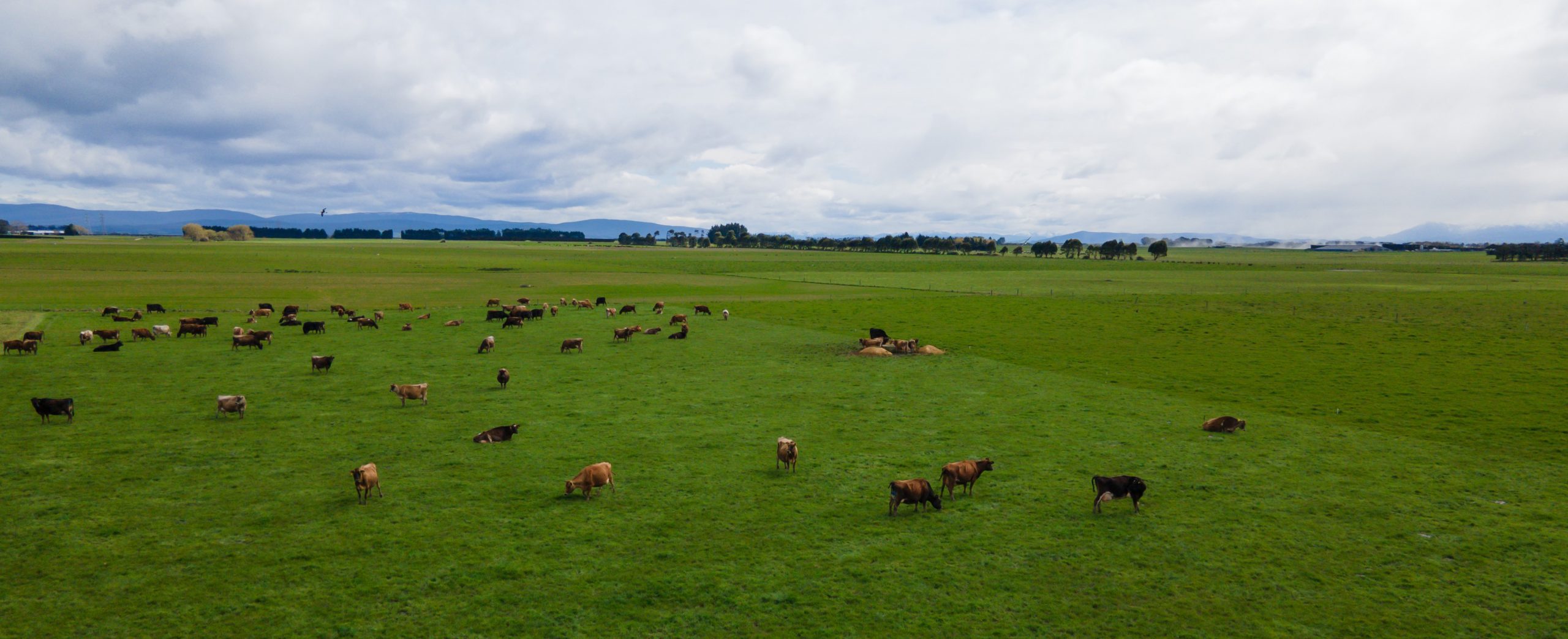A drive to be more efficient, self-contained and profitable has increased the role of pasture on Jason Erb’s dairy farm in Southland.
Jason milks 850 cows on his 363-hectare property in Otahuti, near Winton. Germinal’s High Sugar Grasses and clovers have been used on the farm for nearly 20 years as part of a permanent pasture mix.
The pasture’s persistence and quality, combined with a longer grazing round, has enabled Jason to lower his nitrogen application rate without impacting production. Nitrogen is now only applied in extreme events to fill any genuine feed deficits, instead of relying on it all year.
“We use annual maintenance fertiliser, but generally we tend not to use much urea,” says Jason, who uses Germinal’s AberGreen and AberMagic High Sugar Grasses, with AberLasting and AberNormous clovers.
“The thickness of the Germinal pasture is a key advantage, as it doesn’t go stalky. This means the pasture quality is easier to maintain, and we achieve higher yields.
“When we do our silage, the contractors are usually surprised by how many bales they get. It is a really good leafy grass.”

The pasture is also able to withstand a longer 30-day rotational grazing system throughout the dairying season – compared to the standard 18–21 day rotation. The longer rotation reduces the number of grazings per year, enabling Jason to utilise clover for nitrogen fixing.
“Other grasses would get too stalky on a 30-day rotation, but the dense Germinal pasture manages to keep its quality despite the longer grazing period,” says Jason.
Germinal’s climate smart clover variety, AberLasting, features a superior root system that extends further below ground, providing greater grazing tolerance and a more robust source of natural nitrogen.
Meanwhile, Aber High Sugar Grasses – which are exclusive to Germinal – are bred to produce more water-soluble carbohydrates (WSC) or sugar energy, delivering up to 17 percent more WSC than a conventional ryegrass.
The high sugar content creates a better balance of energy and protein in the rumen, allowing the microbes responsible for the breakdown of forage to operate more efficiently. As a result, more grass protein is converted to milk and meat, with less excreted into the environment.

“We could always tell when the cows were eating the High Sugar Grass, as the milk would increase,” says Jason.
Environmental mitigation is a key focus for Jason, who has recently built two composting barns for wintering stock on-farm.
“Our soils are very heavy with clay underneath, which means it can get quite wet on the flat during winter. The barns allow us to keep the stock off the pasture and help us to meet new environmental regulations.”
